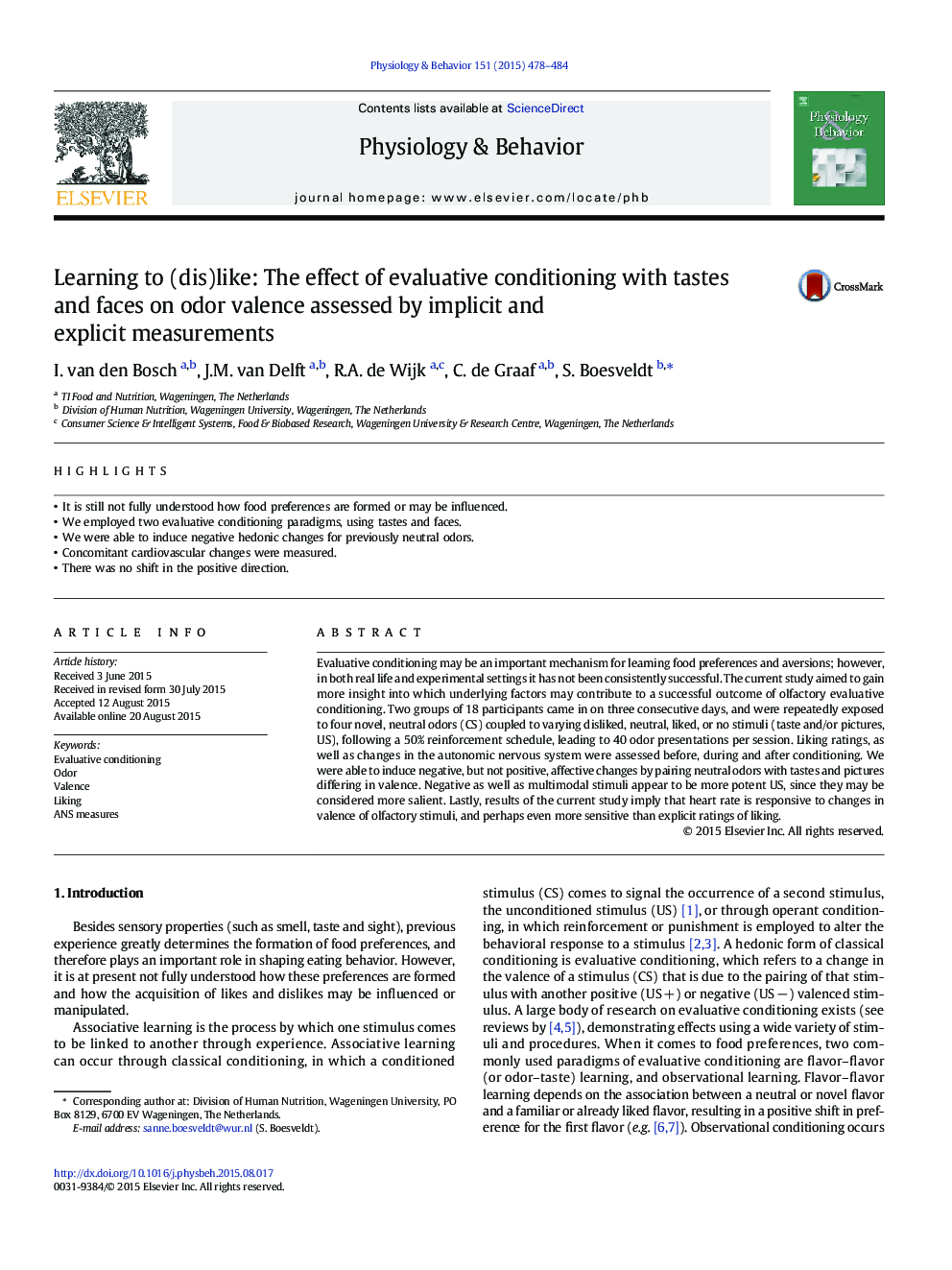| Article ID | Journal | Published Year | Pages | File Type |
|---|---|---|---|---|
| 5923338 | Physiology & Behavior | 2015 | 7 Pages |
â¢It is still not fully understood how food preferences are formed or may be influenced.â¢We employed two evaluative conditioning paradigms, using tastes and faces.â¢We were able to induce negative hedonic changes for previously neutral odors.â¢Concomitant cardiovascular changes were measured.â¢There was no shift in the positive direction.
Evaluative conditioning may be an important mechanism for learning food preferences and aversions; however, in both real life and experimental settings it has not been consistently successful. The current study aimed to gain more insight into which underlying factors may contribute to a successful outcome of olfactory evaluative conditioning. Two groups of 18 participants came in on three consecutive days, and were repeatedly exposed to four novel, neutral odors (CS) coupled to varying disliked, neutral, liked, or no stimuli (taste and/or pictures, US), following a 50% reinforcement schedule, leading to 40 odor presentations per session. Liking ratings, as well as changes in the autonomic nervous system were assessed before, during and after conditioning. We were able to induce negative, but not positive, affective changes by pairing neutral odors with tastes and pictures differing in valence. Negative as well as multimodal stimuli appear to be more potent US, since they may be considered more salient. Lastly, results of the current study imply that heart rate is responsive to changes in valence of olfactory stimuli, and perhaps even more sensitive than explicit ratings of liking.
